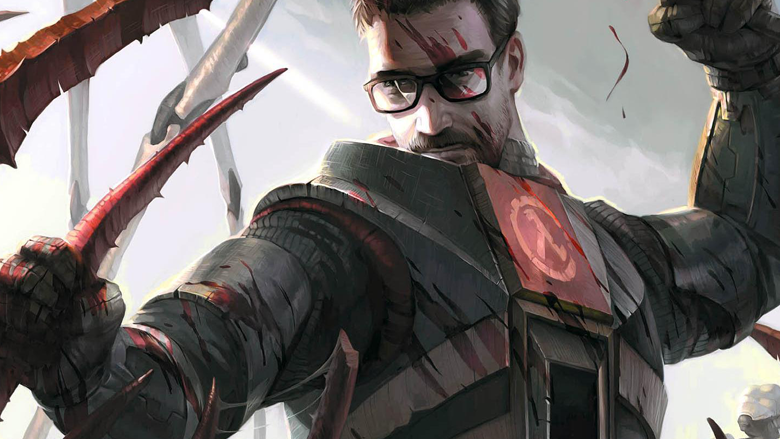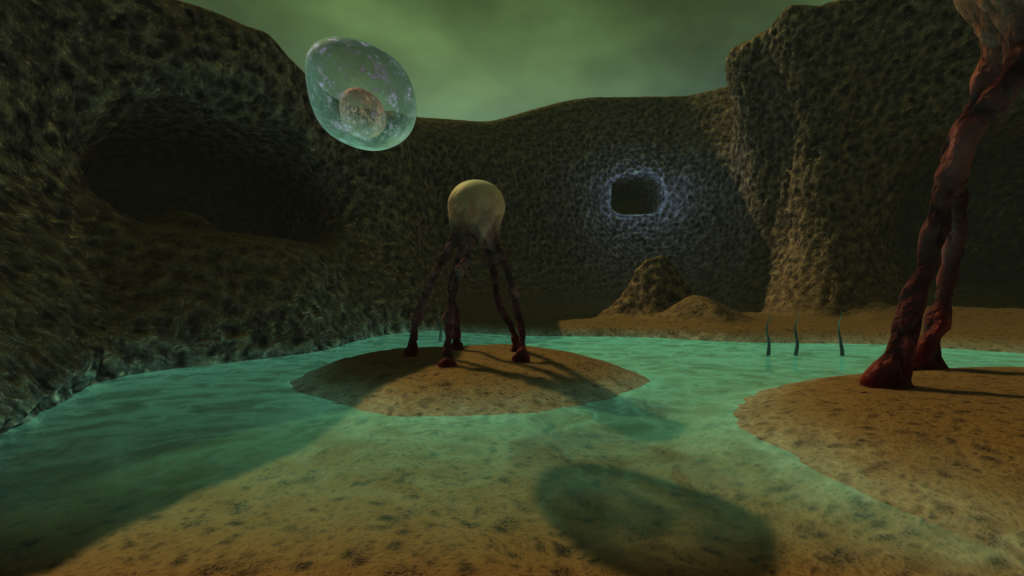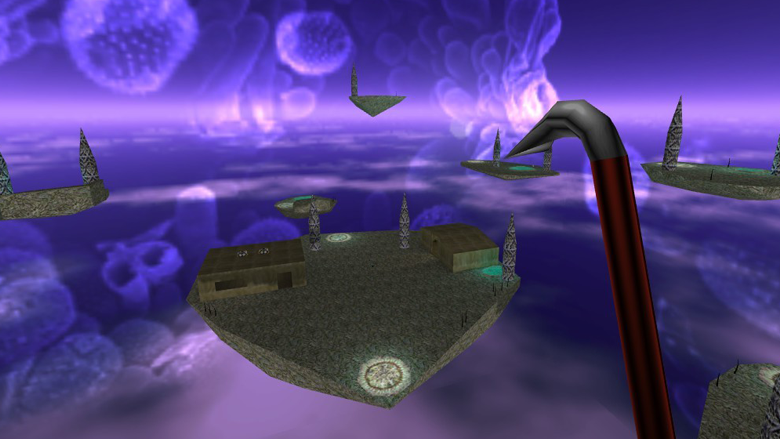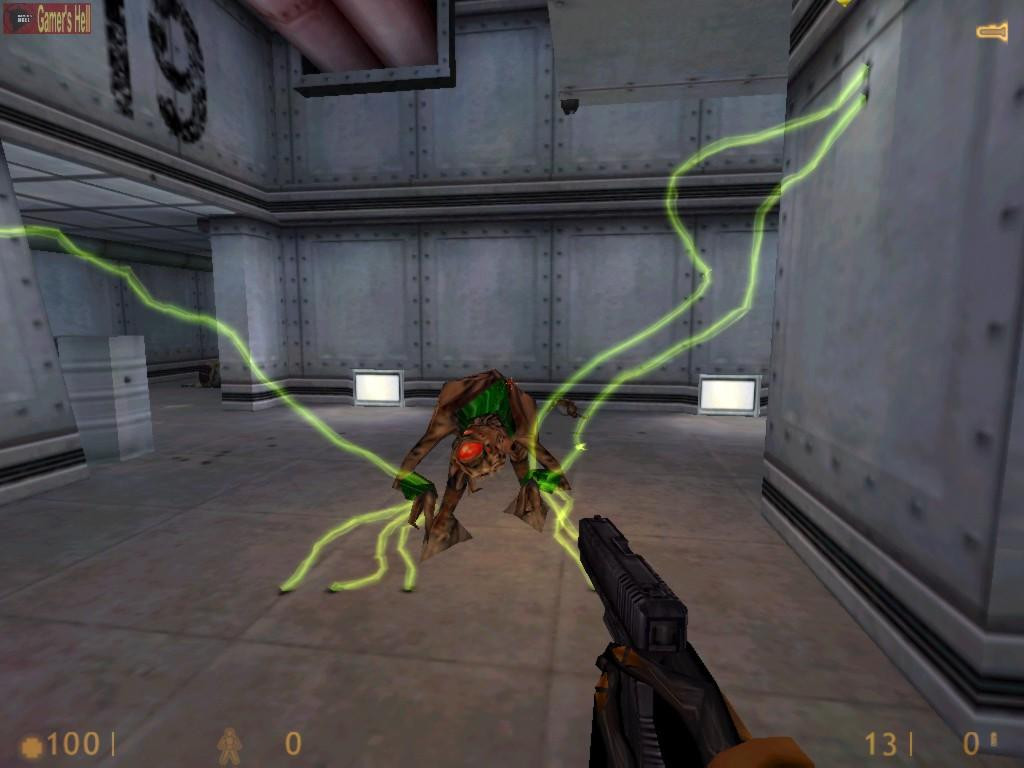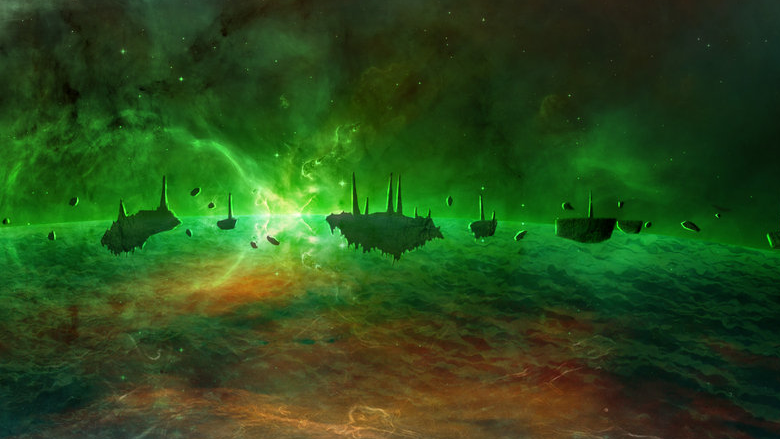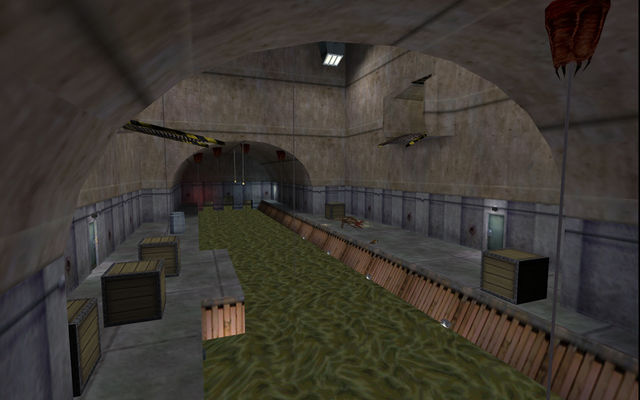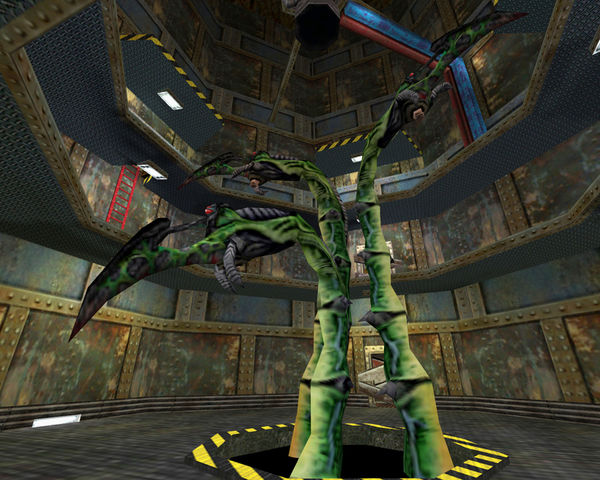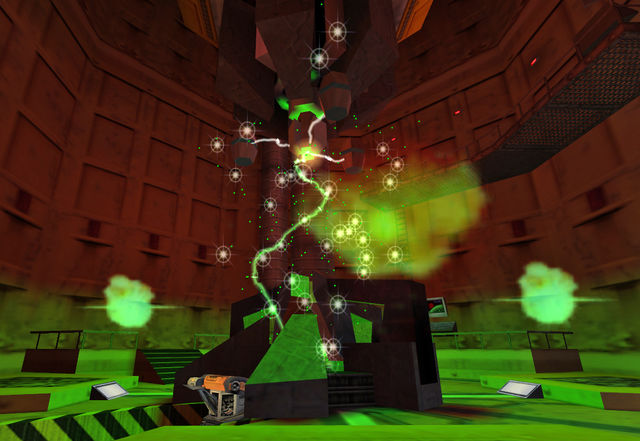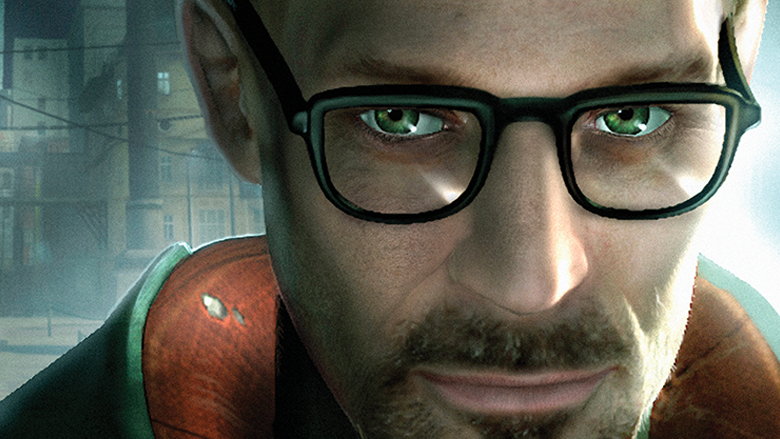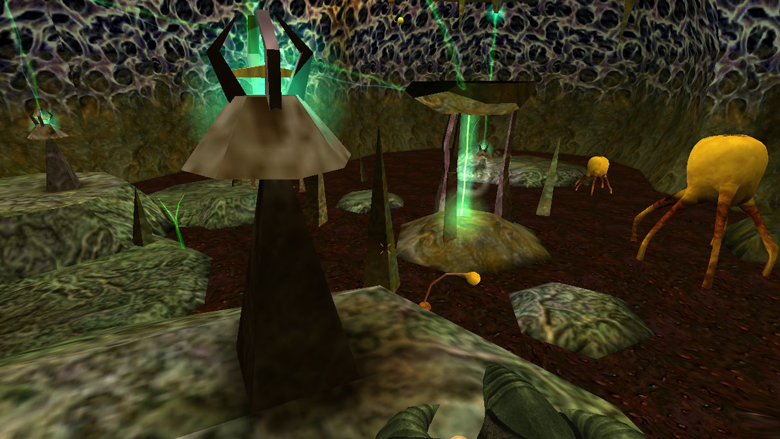Half-Life screenwriter: “It was like I was creating a novel”
Half-Life Lead Screenwriter Marc Laidlaw He told me how many years ago he worked on one of the best stories in the gaming industry. We have translated the text and are sharing it with you.
Editor’s note: the author wrote this text on November 9, 1998.
When I joined Valve, work on Half-Life was already coming to an end. The game was supposed to start selling around Christmas. If I had been lucky, I would have put the finishing touches to the script for two weeks, and then I would have started working on a much more detailed storyline of the second game. It was July 1997.
Last night, as the sun was setting over Kirkland, Gabe Newell he brought the tire iron to the pinata in the shape of a headcrab. She, like a Damocles headcrab, has been hanging over their heads for several weeks in the main room of Valve, waiting for Half-Life to “go for gold.” And while toy money and rubber bugs were scattered around the room, I gradually realized that I had finished working on the script for Half-Life. All the days between July 1, 1997 and November 8, 1998, it seemed to me, were somehow full of this game. I’m exaggerating, of course-but not much. And if my memory is wrong, it’s only because the world of Half-Life created a gravity well of such strength and power that everything that somehow turned out to be nearby was inexorably sucked into it and changed beyond recognition there. While I was working on it, the game surprised me more than once, and I can only hope that the audience is waiting for the same.
The 1997 Half-Life was very vaguely reminiscent of the Half-Life that had just “gone for gold”. The scenario included an accident at an abandoned rocket base, an experiment with an interdimensional portal, many, many intelligent aliens and hostile people, and a bonus – a trip to another planet. But when I studied the game, I did not understand where and how exactly this story was going to be told. When working on an inter-author cycle, one of the writers or editors comes up with the main place of action, for example, as in “The World of Thieves” (a series of fantasy novels edited by Robert Asprin – approx. editors) – and then several other authors are asked to write stories with the same source data in the base. Some of the characters must necessarily wander from text to text, you need to mention events from previous episodes – but in general, each story is a separate and complete work.
It was the same with Half-Life. There was an experimental portal, several shafts, a couple of tunnels, a nuclear reactor and endless kilometers of corridors and ventilation pipes. The scenery was excellent, but it remained completely unclear what kind of story would unfold among them. Half-Life was an anthology, and Valve wanted something consistent, whole – a novel.
I’m a novelist, so I was hoping that I could give some instructions to a team that was already doing a great job of creating what from the very beginning was an ambitious promising game of epic proportions.
There was no magic formula for success. I was guided only by my intuition and experience in a completely different field. But, apparently, this was required, because Valve was creating something that had no example. If we hadn’t done it, we would never have known if we had succeeded or not. But if we had done everything right, we would have understood it right away. And eventually we would have our example.
Before I joined Valve, I had published half a dozen novels and several dozen short stories. I got stuck on cyberpunk and watched from almost the front row how it was gradually gaining popularity. I wrote scripts, dabbled in journalism, and lately I’ve been playing a lot of computer games. I played them, yes, but also studied them. I was trying to figure out how they were made. It’s not that I’m tired of writing prose, but I haven’t done anything but writing for more than 20 years. And my muse led me to another path. At some point I discovered that I was making Quake maps for fun. And then I realized that I was working for id, describing the history of this company (Mark Laidlaw wrote a series of articles for the professional resource Wired, where he described exactly what the studio does – approx. editors) and I dream of somehow becoming part of the team. Working at id was a revelation for me. For the first time in my life, I watched a team of extremely talented and incredibly creative people working on a project. I was subdued. And he also lost heart, because there was obviously no place for a writer among them. I found the thing I wanted to do more than anything else in the world – to create fantastic worlds with the help of John Carmack’s amazing technology. But there was no place for me.
That’s about when I started making plans. I decided to either find a place for myself in this world, or create one for myself.
Initially, I came to id on the assignment of Wired magazine. I had to write the title article in the issue about how Quake was created. By coincidence, when this issue was just released, Gabe Newell and Mike Harrington first appeared at the id office to discuss licensing the Quake engine for their own gaming startup. Mike and Gabe were old acquaintances of Michael Abrash, a former Microsoft employee, and now one of the most important programmers at id. Abrash was the only one in id who was always ready to translate what John Carmack said so that I would understand and be able to convey it to the readers of Wired.
We became friends, and the first time I heard about Valve was from Michael. I was in doubt at the time, because I was offered a job as a writer at IonStorm, and I still couldn’t bring myself to move to Texas. Michael told me about other jobs, including one at Valve. I knew that they had just acquired the right to use the Quake engine – the only technology that interested me. I couldn’t understand why someone wouldn’t take the best of the existing engines, namely the Carmack engine, and start using it to tell fantastic 3D stories from the first person. It is quite understandable that when I finally saw what Valve was doing, I immediately felt in my place.
Writing is a noble occupation, but lonely. Especially when you write fiction. You sit down at a typewriter or computer and torture your own brain as much as you can. I’ve worked with friends a few times and it’s been great. I was working on a script based on William Gibson’s novella Hollywood and that’s it. It was a joint effort – in the same sense that armed resistance is a joint effort. But when I saw the team at id, I realized that I was just eager to work with other people, with people whose artistic vision and abilities would give me a daily charge of delight and inspiration.
Valve is just such a place. When I work, I’m almost completely immersed in the case – every neuron is involved. Every day I turn to my writing experience and intuition… And not only when I sit down to write another dialogue or a piece of script. Writing is given a very limited period of time, and nevertheless, in order to solve the problems that arise during the development of the game, I constantly turn to what my profession has taught me.
One of the advantages of working alone is that you pay a lot of attention to the subtleties of the creative process. No one distracts you. It’s like climbing a mountain alone. You mark every step, every bird’s trill is heard especially clearly, because no one is talking nearby. Let’s just say that when you write a couple of novels alone, you begin to distinguish certain milestones on the way from the first page to the inscription “The End”. Every novel I’ve written has started with a charge-or even a few charges-of inspiration. These stunning moments are usually so vivid that it seems impossible to forget them, and yet somewhere along the way they are inevitably lost sight of. In the midst of creation, nothing is visible – only chaos and vague glimpses of meaning. You lose your direction and may even be ready to despair.
It’s very easy to give up at this point – I gave up. But if you continue, you will realize that the feeling of helplessness that you experience in the middle is passing. It can even be useful because it makes you doubt your decisions and put them to the test. The book that will be the result of these doubts and searches, I am sure, will be stronger, more complex and, in some mysterious way, more integral than it would be without them. And still – it’s a painful process, even if you’ve already been through it several times. You learn not to quit your job. You keep going until you get to what you think is the end, only to realize that this is not the end at all, but another launching pad.
I was talking about novels, but exactly the same applies to Half-Life. Perhaps this applies to any creative work.
It took me several months to at least understand what the essence of my work at Valve is and how I can contribute. Our maps were a confusing collection of files with names like c1a1c, c2a3b, c3a2. So it was difficult for me to even remotely resemble a person with a brain when I was asked something like: “What do you think about c2a4a?” By the time I finally figured out the difference between c2a3 and c3a2 and was already trying to figure out how to assemble a loose Half-Life script into something whole, Mike and Gabe decided that the whole game needed to be redone. On Thanksgiving Day, just when we were supposed to be hitting a pinata in the form of a headcrab with a tire iron, we started hitting the game. The floor in the office was littered with Half-Life fragments. We took the game apart by cog, trying to determine what works, what can earn in the future, and what may never work, taking into account all our capabilities. In a sense, this process was very painful: the game had to be delayed for a long time, which no one would like, and it also meant that a huge piece of work would have to be thrown out and, most likely, never come back to it.
It should be noted that I personally like the alterations and the fact that the original idea is being improved in the process. But remaking collective creativity is always much more difficult than just plowing through someone’s work. Each part of the game rejected by us was the work of some artist, programmer or level designer. I was lucky: I had a chance to work with several excellent editors who did not hesitate to give me their opinion if I did not give one hundred percent. But none of them stopped at a simple criticism. A good editor is trying to figure out what went wrong. A good editor, with the help of a couple of thoughtful comments, is able to miraculously bring the story back into line.
When I worked with level designers, I tried to keep these examples in mind. Of course, we had certain goals and expectations from the game. In addition, each designer had their own talents and abilities. Where possible, we tried to combine the tasks of the games and the strengths of the designers. We had designers who were particularly good at large locations. They could sketch a huge complex area with a couple of masterly strokes. There were those who turned on to the full after the main architecture of the location was determined. They managed to come up with a perfectly balanced dramatic scene using monsters, triggers and scripts. Half-Life has benefited a lot from the fact that we took this into account and reorganized the workflow so as to take into account the characteristics of each designer. In the last two months before the launch, few designers were solely responsible for the map they made.
When we moved from redesigning on paper to implementing ideas, I was asked to lead a team of level designers. From this position, it was very convenient to continue to introduce plot elements into the game and make sure that all parts of the game interacted with each other as intended. Level designers were so busy with their work that they rarely had time to fully appreciate what others were doing. But I could evaluate the work of the whole team on a daily basis. Designers were constantly coming up with amazing details, things that weren’t in the script, but that should have been in it. I experienced that sudden burst of inspiration that a writer sometimes has enough to realize that he is finally on the right track.
An important milestone for me was the completion of the first layout of the entire game – in fact, the first rough draft of the project. I knew that as soon as we could honestly go through all the cards from beginning to end, the game would appear to all of us in a new light. It will be approximately clear how it will look in the end. Based on my experience as a writer, I really believed in it. Draft layouts exist in order to understand what you really want from the project.
In the case of Half-Life, this turned out to be exactly the case. As soon as we went through the whole game for the first time, adding scripts and configuring gameplay suddenly became much easier. Designers have become much more confident working on their levels, knowing that their work will eventually get into the game. Now we no longer threw out the pieces, but finally began to improve and work out in detail what was available.
If we talk about the creation of a novel, then there is such a common technique – a certain finished image is taken and then variations of this image are worked out somewhere else in the text. In this way, a continuous chain of meanings and metaphors is created, which enriches the narrative. I was very pleased when I saw that there is a similar thing in Half-Life. One of the most ingenious inventions in Zen, our alien dimension, is a series of portals that pull the player into themselves and then throw him high into the sky, from where he falls and breaks. One of the designers then entered these portals into the Earth levels – so it turned out that the alien dimensions infected the earth ones. Another designer redesigned them so that they began to throw the player up one or two floors. So portals have turned from a trap into an important component of gameplay. This borrowing and the subsequent introduction of elements into the game is the meaning of the revision discussed above, and in my opinion, this is one of the most important events that happened to the game at the late stages of development. Did I, the person who was responsible for the plot of the game, invent these finds? Not at all. Did I encourage them? Yes, damn it! It was my direct task to make level designers constantly continue to invent something. They worked daily on various details of the game, and therefore the plot of the game changed day by day.
Several times we had meetings with the entire Valve team, where I told them what the plot of the game looks like in our understanding from the beginning to the end, so that everyone understands what is happening and where we are moving. But every time the meeting ended, we found another reason to change the plot again. We threw out the ending, we abandoned the central elements or introduced new ones. It has become impossible to keep everyone up to date on what the plot looks like. I repeat, such constant changes were familiar to me. The same thing happened to a greater or lesser extent with every novel I worked on. I would love to convince everyone that such eternal uncertainty is normal. But no one really cared about her. As we approached the deadline, everyone was so busy working on their own parts of the Half-Life universe that they rarely had a minute to think about the whole picture. Everyone believed that someone else was responsible for the overall vision. I was the only one who couldn’t afford it.
We have experienced and discarded quite a few of the main game moments. You, like me, probably remember some of them. For example, there was talk that the game would not impose artificial restrictions on the player, that the game world could be run from the beginning to the end, and then come back. All these features would be very easy to implement, given the peculiarities of moving in the game, but I felt a great relief when we abandoned them. Complete freedom for the player would mean a complete loss of dramatic tension. All dramatic genres, and especially horror, are built on the right speed and rhythm. In horror, choosing the right moment plays a crucial role. It is necessary to set a trap in a certain way and wait for the moment when the victim will be exactly at the specified position. There is nothing worse than being late or in a hurry. In a non-linear game, such moments are completely impossible to control. I’d have to throw the whole suspense to hell. We really wanted the players to have an artfully structured gaming experience. And time and experience have shown that the best plots are linear.
I also turned out to be a champion at avoiding third-person cutscenes and snimatics. I came to Valve with a deep prejudice against cinematics. I thought that if you make a first-person game, then you need to adhere to this format constantly, do not break the spell of the narrative and do not pull the player out of the plot even for a moment. Somewhere in the middle of the development process, I began to reluctantly recognize the need for cinematics. Our developers have come up with an absolutely wonderful camera system, which, I’m sure, the creators of mods will enjoy. However, as it turned out later, it turned out to use this system only once. And we did this in order to create the illusion of a first-person view and strengthen the charms that we tried to cast. The game had a number of key scenes that could not be realized without cinematics. One of them is a catastrophe that sets the plot in motion. We recorded all the necessary audio accompaniment, the voice acting turned out great, the location where everything was supposed to happen was impressive. But the event itself, which we called simply a Catastrophe, remained shrouded in mystery for the time being.
Due to certain time constraints, the Disaster from the problem of developers has become a problem of level designers. Someone talked about cinematics in the third person, but we have not found a solution. I remember going home on Friday and blindly believing that everything would be solved by itself with the Disaster. That someone else will figure out what to do. And someone else came up with it. I came to work on Monday and realized that everyone was playing the video of the initial disaster over and over again. I held on as long as I could. And when I looked, my hair just stood on end. The final explosion was shown using a third-person cinematics. I knew that the Catastrophe could be shown in the first person and I understood that we had to do everything possible – within the framework that we had set for ourselves. So we decided that the narration will be in the first person only all the way.
An important consequence of the rejection of cinematics was that Gordon Freeman, our main character, actually lost his visible incarnation. In addition to the loading, the multiplayer menu and the picture on the disc packaging, Gordon Freeman was nowhere to be seen. We are faced with an interesting task. How do I describe a character who is not visible and who hardly speaks? We let the player solve the problem himself. Starting to play, you don’t know much about Gordon. But everyone around you seems to know who you are, and everyone expects something from you. And here in the gray zone between the NPC’s knowledge of Gordon and the player’s lack of information, something curious happens. The user creates his own Gordon Freeman, a character with whom you can fully identify yourself. Once you start playing, there’s nothing that would push Gordon away. He won’t say anything you’d never say. He won’t do anything you wouldn’t do, because you control all his actions. It becomes an empty shell that each player fills in his own way.
Such flexibility does not allow a traditional approach to character development. We have created a gaming experience – a story that has a beginning, a middle and an end. We gave the player a lot of hints, from which, if he wants, he will create an explanation for what is happening. And by the end of the game, each player will receive his own unique version of Half-Life, which is dear to him in his own way, not like everyone else.
Before I started working on Half-Life, I often heard the opinion that first-person shooters don’t need a plot, that hardcore players don’t want story games, that if something more complicated than moving targets and buttons to press appears in the game, then you will lose players. The reaction of our audience refutes this point of view. If anything, what the players want is even more plot. But a plot that is merged with actions, a plot that catches, but does not slow down. It goes without saying that a boring plot is a bad plot. And that if a game script is not real literature, it does not mean that it is necessary to write boring or bad for it. If the players don’t like the squalid plots that are offered to them, then the players shouldn’t be blamed for this.
Anyone who starts writing scripts for computer games needs to first figure out what dramatic principles and techniques fill traditional art forms with meaning and allow them to influence perception. Start with this – but by no means limit yourself to this. What’s great about games is that traditions here are not a set of narrow frames, but play the role of a springboard. Taking as a basis a reliable foundation of traditional writing skills, we will find ourselves in the most advantageous position to create completely new experiences that our audience – any audience – has not experienced before.
I see the task of game design as creating a constant tension between tradition and innovation. When I see how our main character, Gordan Freeman, serves as the material from which the player creates his own character, I can’t find a literary or cinematic equivalent for this. And it excites me unimaginably. How often does a writer manage to work with tools that no one has used before? The pages of early literary and cinematic history have already been written. Any writer who wants to know what it’s like to become a pioneer needs to be here.
Translated by Irina Smirnova
Source: Mark Laidlaw’s Blog
